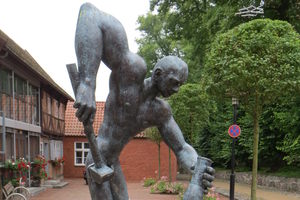
Before the advent of minting machinery, coins were individually crafted by hand. Referred to as hammered coinage, they were created by placing a blank piece of metal (called flan) between two dies. The metal was then struck on an anvil. During the late 16th-century, the town of Gadebusch was granted the right to mint and produced a number of silver coins for the Principality of Mecklenburg. The mint itself is not widely known due to its relatively short period of production, but the town appreciates its historic value today. Titled…



